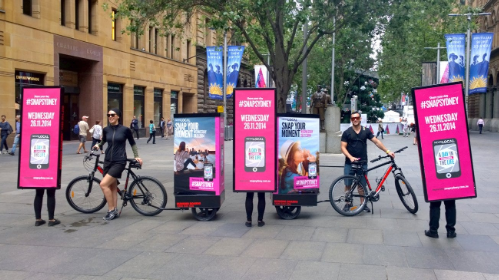In an era of saturated media and short attention spans, digital bike billboard advertising is gaining momentum as a fresh and mobile marketing solution. With the flexibility to move through high-footfall areas, this advertising method allows businesses to engage audiences in real time, often where traditional signage or static billboards fall short. But when it comes to measuring impact, one key question remains—do digital bike billboards deliver a strong return on investment (ROI)?
What Makes Digital Bike Billboards Stand Out?
Unlike stationary signage, digital bike billboards are mounted on bicycles or e-bikes and can be driven directly to high-traffic areas like shopping districts, event venues, or entertainment zones. Their screens are typically LED-based, offering vibrant visibility even in broad daylight. This mobility adds a unique advantage: advertisers can target specific audiences at specific times and places, creating a hyper-localised marketing approach.
Brands that embrace this format often seek more engagement, flexibility, and cost control. Since these billboards are human-powered, operational costs can be significantly lower than mobile trucks or permanent digital billboards. That, paired with their ability to be repositioned throughout the day, results in more impressions per dollar spent.
Visibility and Engagement Metrics
From a performance standpoint, digital bike billboards excel at increasing visibility in urban spaces. Whether placed near transit hubs or large events, these moving advertisements draw eyes simply because they’re not part of the visual clutter people are used to ignoring. Unlike social media ads or pop-ups, they’re not intrusive, yet they still manage to stand out.
Measuring ROI begins with looking at reach and impressions. On average, a digital bike billboard in a city centre can gather thousands of views per hour. Add in animated visuals or video ads, and the engagement rate increases further. Additionally, many operators now offer GPS tracking, real-time location updates, and viewership analytics to help marketers assess their campaign reach.
Cost Breakdown vs. Traditional Advertising
Compared to static billboards, bus wraps, or digital trucks, the cost of operating a digital bike billboard campaign is often more accessible for small to mid-sized businesses. The setup involves a one-time build or rental fee, and then usage costs are based on daily or weekly exposure. Since these units don’t require fuel or heavy logistics, the cost remains predictable and efficient.
The upfront investment might appear higher when LED screen technology and design customisation are included, but the longevity and flexibility of the digital format often make up for it. Many advertisers reuse the same bikes and LED panels across different campaigns, improving overall ROI over time.
Flexibility of Targeting
One of the standout advantages of this advertising medium is the ability to adapt. Businesses can schedule where and when their ads appear, shifting locations by time of day, event calendar, or local behaviour patterns. This precision targeting improves conversion potential.
Restaurants may place ads near business districts during lunch hours, while retail brands might focus on malls during weekends. Because these bikes are so easy to reposition, the flexibility makes them perfect for campaigns that need to adapt quickly to consumer trends or local foot traffic changes.
Brand Perception and Innovation
Beyond visibility and cost-efficiency, digital bike billboards can elevate a brand’s perception. The innovative and eco-friendly appeal of these mobile displays resonates well with urban, socially aware consumers. It reflects well on businesses aiming to appear modern, sustainable, and connected with the local community.
This emotional and aesthetic value can have an indirect impact on ROI—customers are more likely to remember brands that align with their values or stand out in an unexpected way. Digital bike billboards, by their very nature, have novelty on their side.
When Do They Work Best?
To fully capitalise on this advertising strategy, timing and placement are crucial. Here’s where they’re most effective:
- Launching a new product in urban centres
- Promoting events, pop-ups, or limited-time offers
- Raising awareness in public campaigns or festivals
- Running cost-effective branding campaigns for local businesses
In all these scenarios, the combination of mobility, visibility, and cost control delivers compelling results.
Conclusion: The Investment Perspective
While returns will vary depending on campaign goals and execution, most businesses find that the combination of flexible targeting, strong visibility, and lower operational costs makes digital bike billboard advertising a worthy investment. It bridges the gap between out-of-home media and on-the-go engagement, offering an effective solution in today’s evolving marketing environment.
For brands looking to further expand their mobile advertising footprint, alternative formats like solar LED sign trailers provide an eco-conscious solution for static or long-term campaigns. These options can complement a digital bike billboard strategy, particularly for businesses that operate across multiple event sites or fixed locations.
By investing wisely in this form of outdoor media, businesses can enjoy a modern, attention-grabbing, and ROI-friendly path to greater brand exposure.







